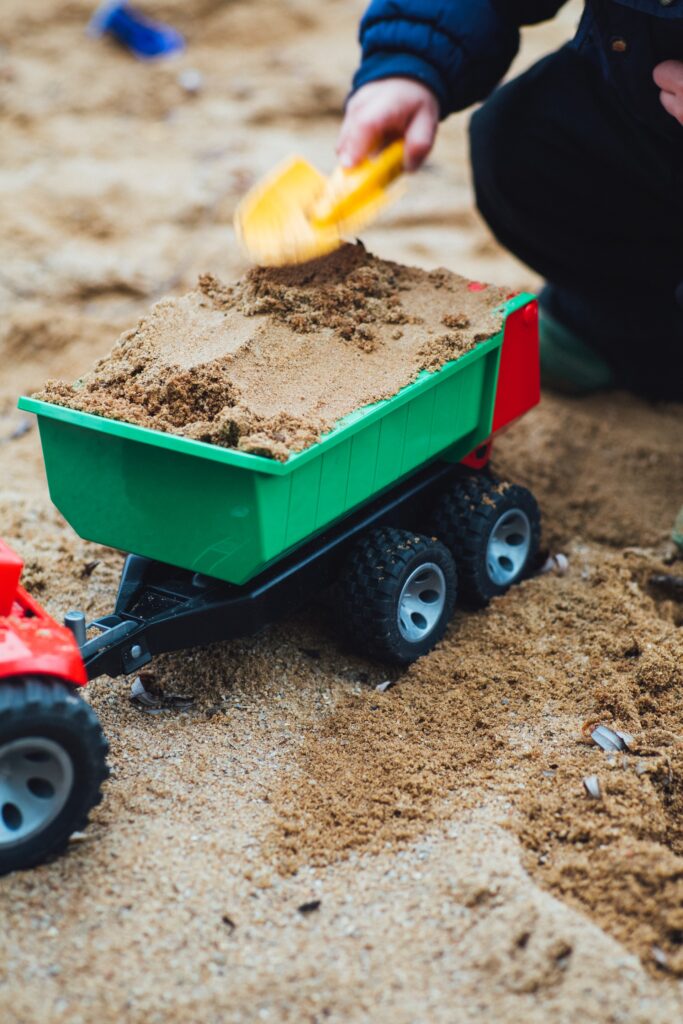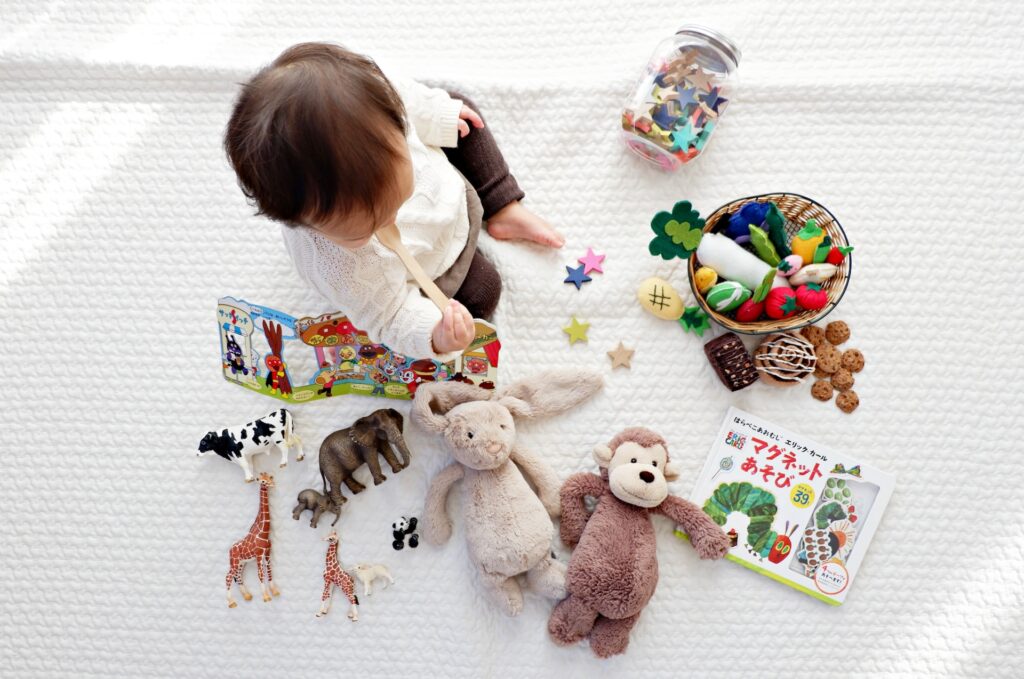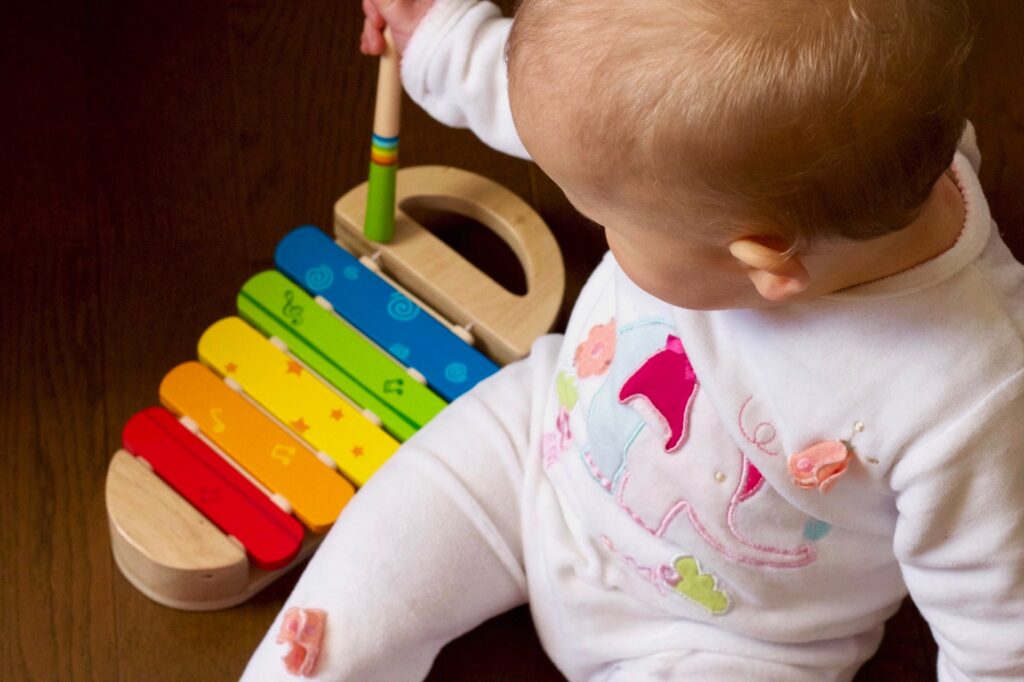The journey of childhood is marked by countless milestones, each contributing to the intricate tapestry of development. Among these, the role of play stands out as a pivotal force shaping a child’s cognitive, emotional, and social growth. Understanding the significance of play in child development is paramount for parents, caregivers, and educators alike.
Play is not merely a frivolous activity; rather, it serves as the cornerstone of a child’s holistic development. From fostering creativity to enhancing problem-solving skills, play lays the foundation for a range of cognitive abilities. Psychologists and child development experts have long emphasized the vital role of play in helping children express emotions, build social connections, and develop a sense of identity.
Moreover, play acts as a natural avenue for learning. Through interaction with their environment, children grasp fundamental concepts, refine motor skills, and explore the world around them. It is in the joyous moments of play that children often learn the most, making it an indispensable component of early childhood education.
Table of Contents
- Early Sensory Exploration
- Developing Motor Skills
- Hand-Eye Coordination
- Exploring Texture and Shape
- Imaginative Play
- Social Play
- Cognitive Development
- Individual Variations
- Final Thoughts
Early Sensory Exploration

The first three months of a baby’s life are a magical period filled with wonder, growth, and the building blocks of sensory exploration. During this time, infants navigate a world that is largely unfamiliar, relying on instinctual responses and the guidance of their caregivers.
Limited Motor Skills
As tiny bundles of joy make their debut into the world, their motor skills are in the nascent stages of development. Simple reflexes, such as grasping and sucking, dominate their repertoire. Their movements are largely uncoordinated, resembling a beautiful dance of spontaneous gestures that signify their response to external stimuli.
It is during these initial weeks that the foundation for more refined motor skills is laid. Parents may observe their little ones experimenting with the movement of their limbs, a precursor to the dexterity required for later stages of play. While the physical abilities are still in their infancy, the groundwork is being quietly established for the intricate dance of play that will unfold in the coming months.
Sensory Stimulation through Touch and Sound
In the absence of fully developed visual acuity, infants rely heavily on their sense of touch and sound to explore the world around them. Soft, textured blankets and gentle caresses become essential elements of their early play experiences. The warmth of a caregiver’s touch and the comforting embrace of a blanket contribute not only to physical comfort but also to the formation of emotional bonds.
Furthermore, the auditory realm becomes a playground for their burgeoning senses. From the rhythmic heartbeat of a parent to the melodic hum of lullabies, babies are attuned to the symphony of sound that envelops them. Responsive cooing and gentle conversation create a dialogue that lays the groundwork for future language development.
Understanding the significance of sensory stimulation during this period allows caregivers to provide a nurturing environment. Simple, high-contrast toys, gentle rattles, and soft fabrics can serve as tools for sensory engagement, offering infants a gentle introduction to the world of play.
Developing Motor Skills
The period spanning from three to six months marks a remarkable chapter in an infant’s development—one where the canvas of movement begins to broaden, and the first strokes of intentional actions are painted. As babies transition from the realm of reflexes to purposeful movements, the emergence of basic motor skills takes center stage. Among these skills, the ability to grasp and reach for objects becomes a defining feature of their newfound interaction with the world.
Introduction of Basic Motor Skills
During these months, infants undergo a metamorphosis in their motor capabilities. The once sporadic movements of limbs begin to evolve into more intentional gestures. Babies start to discover the power of their arms and hands, realizing that they can influence the environment around them. This transition is a testament to the ongoing development of neural connections and muscular coordination—a symphony of growth that sets the stage for more sophisticated motor skills down the road.
Parents may observe their little ones engaging in purposeful movements, such as bringing hands together, waving, or batting at nearby objects. These actions are not only adorable milestones but crucial building blocks for the intricate world of play that lies ahead. Encouraging such exploratory movements provides infants with the opportunity to refine their motor skills and build confidence in their newfound abilities.
Grasping and Reaching for Objects
A significant hallmark of motor skill development in this phase is the emergence of grasping and reaching behaviors. Infants, with their eyes wide in curiosity, extend tiny fingers toward objects within their line of sight. The act of grasping is an early indication of hand-eye coordination, a skill that forms the basis for more complex interactions with toys and the surrounding environment.
Caregivers can introduce age-appropriate toys that cater to these newfound abilities. Soft, textured items that are easy to grip become the playmates of choice, encouraging the exploration of different shapes, sizes, and textures. These interactions not only stimulate the senses but also lay the foundation for future cognitive and physical development.
Hand-Eye Coordination
In the unfolding narrative of infant development, the span between six to nine months is a period of burgeoning capabilities and delightful discoveries. As motor skills become more refined, infants embark on a journey where their movements align with their visual perceptions, laying the groundwork for a more interactive and engaging relationship with their environment.
Enhanced Motor Skills
The transition from the third to the ninth month is characterized by a significant leap in motor skill development. What were once tentative movements now evolve into purposeful actions. Infants demonstrate a newfound control over their bodies, allowing them to sit upright, roll over, and, in some cases, crawl. These achievements mark milestones in physical development, indicative of the strengthening muscles and improved neural connections that pave the way for more sophisticated movements.
As caregivers observe these dynamic changes, they become witnesses to the unfolding potential of their little ones. Encouraging safe exploration of the surrounding space becomes crucial during this period, fostering confidence in the developing motor abilities of infants.
Coordination between Hands and Eyes
The highlight of this developmental stage is the blossoming coordination between hands and eyes. Infants, with their curious gazes, now engage in purposeful interactions with objects within their grasp. The once separate realms of visual perception and physical movement converge, giving rise to the captivating dance of hand-eye coordination.
Caregivers may notice infants reaching for objects with greater precision, attempting to manipulate and explore their surroundings. Simple yet stimulating toys, such as soft blocks or colorful objects, become the tools through which this coordination is honed. These interactions not only contribute to the refinement of motor skills but also form the basis for cognitive development as infants learn to understand spatial relationships and cause-and-effect.
Understanding the significance of hand-eye coordination during this phase empowers caregivers to curate environments that stimulate further exploration. It lays the groundwork for more intricate play experiences, setting the stage for the next chapters in the unfolding story of infancy.
Exploring Texture and Shape

As the calendar flips from the ninth to the twelfth month, the world of infant development unfolds with ever-increasing complexity and fascination. At the heart of this period lies a growing curiosity, a yearning to touch, feel, and make sense of the surrounding environment.
Increased Curiosity
The ninth to twelfth month is characterized by a significant surge in an infant’s curiosity. Every corner of the room becomes a potential source of wonder, and tiny hands eagerly reach out to engage with the multitude of objects within their grasp. This heightened curiosity is a testament to the developing cognitive abilities and a growing awareness of the world’s diversity.
Caregivers play a vital role during this phase by providing a safe and stimulating environment. Age-appropriate toys with diverse textures, shapes, and colors become valuable tools for satisfying the insatiable curiosity of little explorers. These toys not only capture attention but also lay the foundation for future cognitive and sensory development.
Preference for Tactile and Colorful Toys
During this phase, infants exhibit a distinct preference for toys that tantalize their developing senses. Tactile experiences take center stage as little fingers eagerly explore different textures—soft fabrics, bumpy surfaces, and smooth materials. This tactile journey not only provides sensory satisfaction but also contributes to the refinement of fine motor skills.
Colorful toys become enchanting companions, capturing the attention of infants and fostering visual stimulation. Bold hues and contrasting shades not only engage their developing sense of sight but also lay the groundwork for recognizing and distinguishing colors. Caregivers can introduce toys that combine both tactile and visual appeal, creating a multisensory playground that enriches the exploration experience.
Understanding and catering to these preferences during the 9 to 12-month period create a harmonious blend of play and learning. It sets the stage for a deeper connection between the infant and the world, paving the way for more complex interactions in the realms of imaginative play and cognitive development.
Imaginative Play
Between the twelfth and eighteenth months, a delightful transformation unfolds in the realm of infant play—imaginative play takes center stage. This period marks the emergence of pretend play, a magical world where the boundaries between reality and imagination blur.
Emergence of Pretend Play
As infants transition into toddlers, their cognitive abilities take a leap, laying the foundation for the enchanting world of pretend play. This period witnesses the birth of imagination as toddlers begin to attribute symbolic meanings to objects around them. A simple block transforms into a phone, and a soft toy becomes a treasured companion. These imaginative leaps are not just cute expressions; they signify cognitive milestones as toddlers engage in symbolic thinking.
Parents and caregivers play a crucial role in fostering this imaginative growth. Providing toys that encourage open-ended play, such as dolls, action figures, or kitchen sets, creates a canvas for toddlers to paint their imaginative stories. This form of play not only entertains but also stimulates cognitive development, creativity, and social skills.
Interaction with Toys in a More Purposeful Manner
During this stage, toddlers evolve from the exploratory touch-and-feel approach to interacting with toys in a more purposeful manner. They begin to understand the functions and possibilities each toy presents. Whether it’s stacking blocks, fitting shapes into corresponding holes, or engaging with toys that make sounds, toddlers now approach play with intentionality.
Observing toddlers engage in purposeful play is a joy for caregivers. It reflects their growing ability to understand cause and effect, problem-solving skills, and an increased capacity for focused attention. Providing a variety of toys that challenge their growing skills ensures that playtime remains a dynamic and enriching experience.
Social Play

The transition from infancy to toddlerhood marks a captivating chapter in a child’s development—the advent of social play. Between the ages of 18 to 24 months, toddlers embark on a journey of social interaction with toys that extends beyond solitary exploration.
Beginning of Social Interactions with Toys
Around the age of 18 to 24 months, toddlers begin to show a keen interest in sharing their play experiences. This marks a significant shift from solitary play to the realm of parallel play, where toddlers engage in similar activities alongside their peers. While they may not engage in direct collaboration, the shared experience becomes a form of connection and a precursor to more intricate forms of social play.
Introducing toys that facilitate parallel play, such as building blocks, allows toddlers to share the same space and materials, fostering a sense of companionship. Caregivers play a vital role in gently guiding these early social interactions, emphasizing the joy of shared playtime.
Sharing and Playing Alongside Peers
As toddlers approach the 24-month mark, the seeds of social cooperation are planted. Sharing becomes a more intentional act, and toddlers start to grasp the concept of taking turns. While possessiveness is a natural aspect of early development, caregivers can encourage a sense of sharing through positive reinforcement and modeling.
Group playdates or structured play environments provide opportunities for toddlers to play alongside their peers. These interactions contribute not only to social development but also to the refinement of communication skills. Through shared play experiences, toddlers learn to navigate the intricacies of social dynamics, laying the foundation for more collaborative activities in the future.
Understanding the importance of social play during this phase allows caregivers to create environments that foster positive interactions. Choosing toys that encourage group activities and cooperation ensures that playtime becomes a social adventure, promoting the development of essential social skills in the formative years.
Cognitive Development

Between the ages of 24 to 36 months, the cognitive landscape of toddlers undergoes a remarkable transformation. This period is marked by a surge in problem-solving abilities and a growing awareness of cause and effect.
Complex Problem-Solving with Toys
The latter half of the second year and the beginning of the third year heralds a period of cognitive blossoming. Toddlers, now armed with an expanding set of cognitive skills, engage in more complex problem-solving with their toys. Simple puzzles, stacking blocks, and fitting shapes into corresponding holes become captivating challenges that they eagerly tackle.
This form of play is not merely a source of entertainment; it serves as a powerful catalyst for cognitive development. As toddlers grapple with spatial relationships, patterns, and logic, they are laying the groundwork for critical thinking skills that will prove invaluable in future educational pursuits. Caregivers can support this cognitive growth by providing toys that encourage problem-solving, gradually increasing in complexity as the toddler’s abilities evolve.
Developing an Understanding of Cause and Effect
The 24 to 36-month period is marked by a growing awareness of cause and effect. Toddlers become keen observers of the consequences of their actions, both in the physical and social realms. This newfound understanding extends to their play experiences, as they experiment with toys to see how different actions yield different outcomes.
Interactive toys that respond to a toddler’s actions, such as buttons that trigger sounds or lights, become fascinating instruments for exploring cause and effect. Through these interactions, toddlers not only refine their motor skills but also develop a deeper understanding of the world’s interconnectedness.
As caregivers, recognizing and supporting these cognitive leaps is paramount. Engaging in conversations, asking open-ended questions, and introducing toys that stimulate curiosity contribute to the nurturing of cognitive development during this phase.
Individual Variations
As we marvel at the intricate dance of development in early childhood, it becomes evident that each child’s journey is a unique narrative, shaped by a tapestry of individual variations. The age at which babies start playing with toys is influenced by a myriad of factors, reflecting the personalized nature of growth and discovery.
Environmental Influences
The environment in which a child is raised plays a pivotal role in shaping their play experiences. Cultural norms, family dynamics, and the availability of stimulating resources all contribute to the onset and nature of play. For instance, a home rich in interactive toys and supportive caregivers may foster earlier engagement in play, while external factors such as access to safe outdoor spaces can also influence a child’s play preferences.
The diversity of environments around the world contributes to a kaleidoscope of play experiences. Some infants may find joy in nature-inspired toys, while others may thrive in environments where imaginative play is encouraged through storytelling and creative activities. Recognizing and adapting to the unique environmental influences on play allows caregivers to create a nurturing space tailored to the child’s needs.
Individual Developmental Differences
Just as every child has a unique fingerprint, their developmental timeline is equally distinctive. Individual differences in motor skills, cognitive abilities, and sensory preferences contribute to variations in the initiation of play with toys. Some babies may showcase advanced motor skills early on, grasping and manipulating toys with ease, while others may take a more gradual approach.
Moreover, personality traits, temperament, and the rate of reaching developmental milestones all play into the individual differences observed in when and how babies engage with toys. Understanding and appreciating these diversities foster a supportive environment that allows each child to unfold at their own pace.
Final Thoughts
Play is not a frivolous pastime; it is the canvas upon which a child’s cognitive, emotional, and social skills are painted. From the simplest sensory interactions to the complex realm of imaginative play, each stage serves as a building block for future growth.
As caregivers, parents, and educators, understanding the significance of play empowers us to create environments that nourish and stimulate young minds. The selection of age-appropriate toys, the encouragement of social interactions, and the celebration of individual variations all contribute to a holistic approach that recognizes the unique needs of each child.
In the grand tapestry of childhood, play remains a timeless thread, weaving together the diverse experiences that shape a child’s identity. So, let us continue to celebrate the joy of play, recognizing its enduring importance in the beautiful mosaic of early childhood development.

